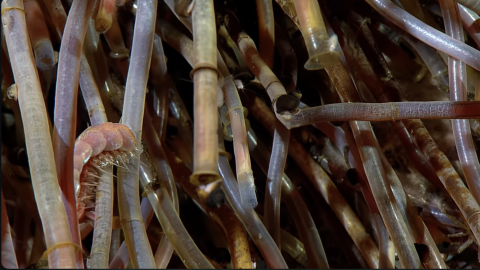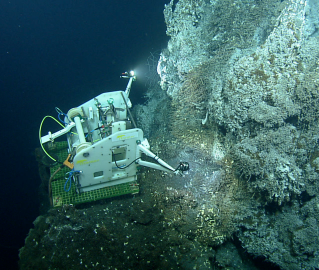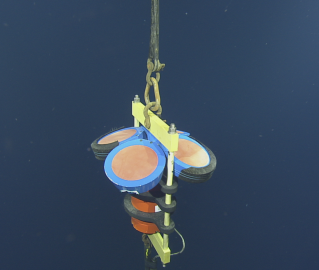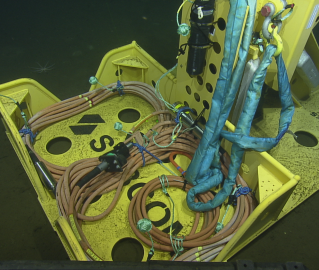Life at Hydrothermal Vents: Exploring Endeavour
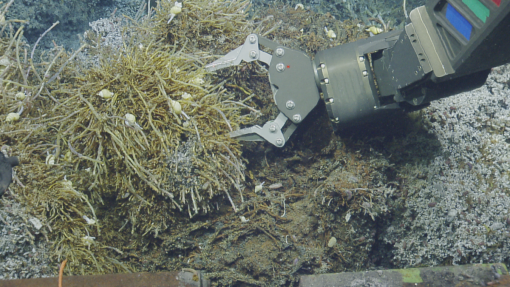
This blog was written by Ocean Networks Canada Educator Monika Pelz.
Driving the ROV across the deep sea landscape, we come across what looks like the gnarled remains of some ancient metropolis: massive pillars of stone looming out of the dark. Some belch thick black smoke, while others have crumbled into a diverse mosaic of stone cobbles.
A long ridge of Hydrothermal vents comes into view, our alien yet familiar destination. Much akin to the city, it’s the abundant life here that makes it worth stopping to observe.
Ocean Networks Canada (ONC) has been providing near continuous monitoring of hydrothermal vents since September 2010. Though seismic data goes back an additional decade and more this continuous monitoring has allowed us to take a look at the unique inhabitants of this bustling ecosystem. Working with groups like Ocean Exploration Trust (OET) has further allowed ONC to share this unique borough with the rest of the world.
Like the denseins of any city, these inhabitants are shaped by the unique landscapes around them. Hydrothermal vents are, in a word, extreme. The sharp rocky towers are warmed by superheated water bubbling up through the earth's crust. As it bubbles up and out, it brings with it dissolved minerals that percolate out to form tall chimneys - somewhat similar to how stalactites form in caves. But of course, this is extreme too, with some of the dissolved minerals being arsenic, cadmium, and lead. Hydrogen sulfide is another common find, and yet the animals here thrive on this toxic mix. In fact, there are at least 12 species found here that have not been discovered anywhere else in the world.
Imagining each group of towers as an apartment highrise, the most conspicuous residents are a twisting gaggle of Hydrothermal vent tube worms. They come in two main morphologies (body shapes) described as “short fat” and “long skinny”. Both are relatively small, comparable to a drinking straw or pencil. Other abundant residents include limpets, palm worms, scale worms, and sulfide worms. It pays to be an invertebrate here, as the searing temperatures and toxic minerals are complemented by enormous pressure.
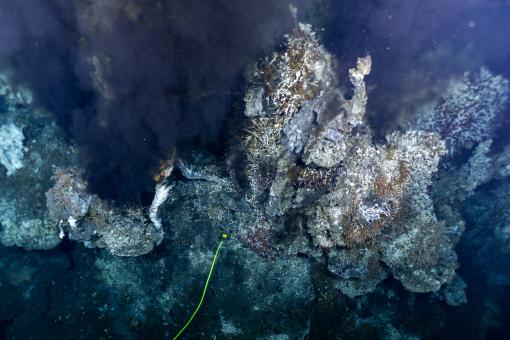
While many creatures of the ventsare relatively small, there are always exceptions, such as the stately deep-sea spider crab.This delicate looking creature is an apex predator down here, with a particular weakness for tubeworms. They clean up any dead worms, and can be found in particular abundance when a tower system no longer becomes habitable for tubeworm residents. This can occur because a vent shifts, cutting off the hot water, or because the tower collapses. Life and death is a quick and dynamic cycle in this abyss, but nothing goes to waste.
The city is home to nomads as well, unlike their sessile neighbors they move among the nest of worms and towers. Some of these visitors are skates, sharks, and fish like the Pacific Flatnose, while the locals include eelpouts, perhaps aptly named as it looks like an eel with a pouting face. Octopus are often seen along the outskirts too, which is always a delight for our crew.
Like any tourist, our visit is sadly limited by time, resources, and a bursting itinerary. However, we do have the unique opportunity to spy on these enigmatic residents through the use of in-situ cameras. In particular, ONC has deployed a camera at Endeavour’s Mothra site which records 4 minutes of video every 4 hours, and one at Main Endeavour Field grotto. Although we can’t dive on the site all year, we can keep an eye on some of those amazing residents.
Stay tuned as OET and ONC explore the hydrothermal vents of the NEPTUNE Observatory during the NA161 expedition!
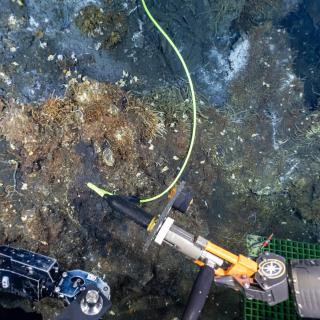
#ONCAbyss Summer 2024
This expedition brings E/V Nautilus to the Northeastern Pacific Ocean for the eighth year of the partnership between Ocean Networks Canada and OET.
